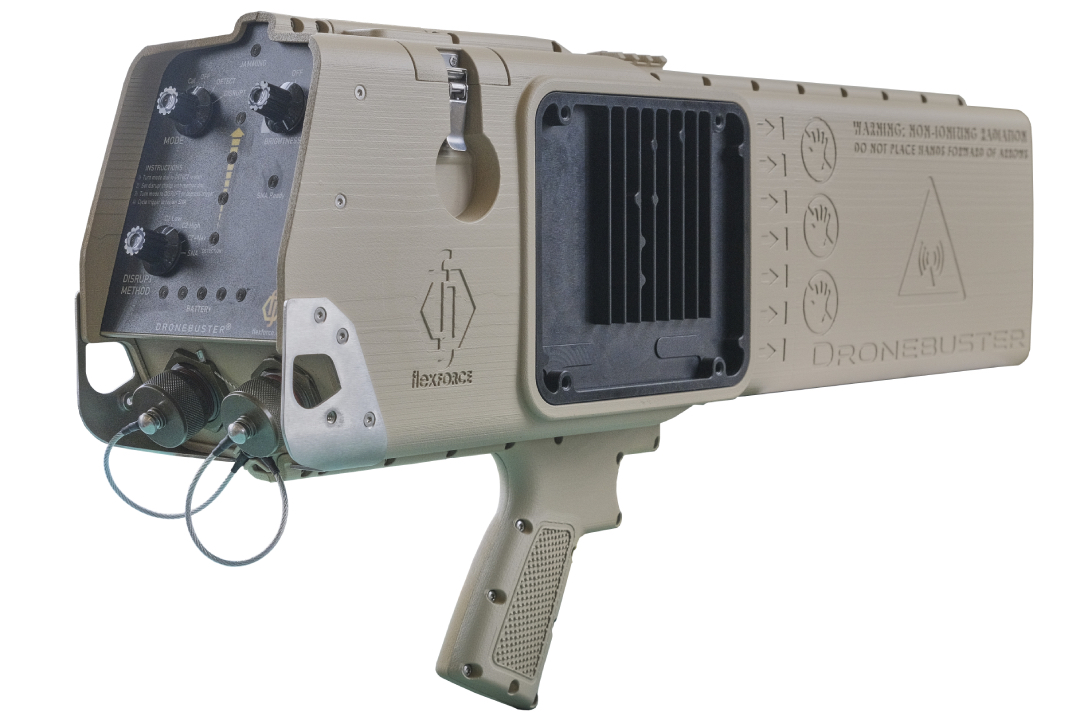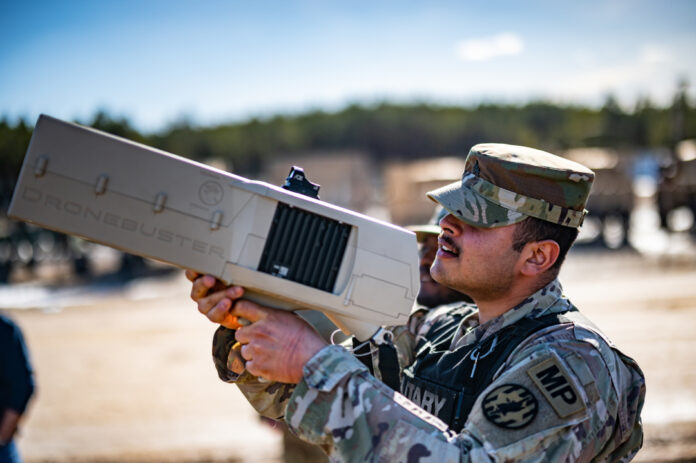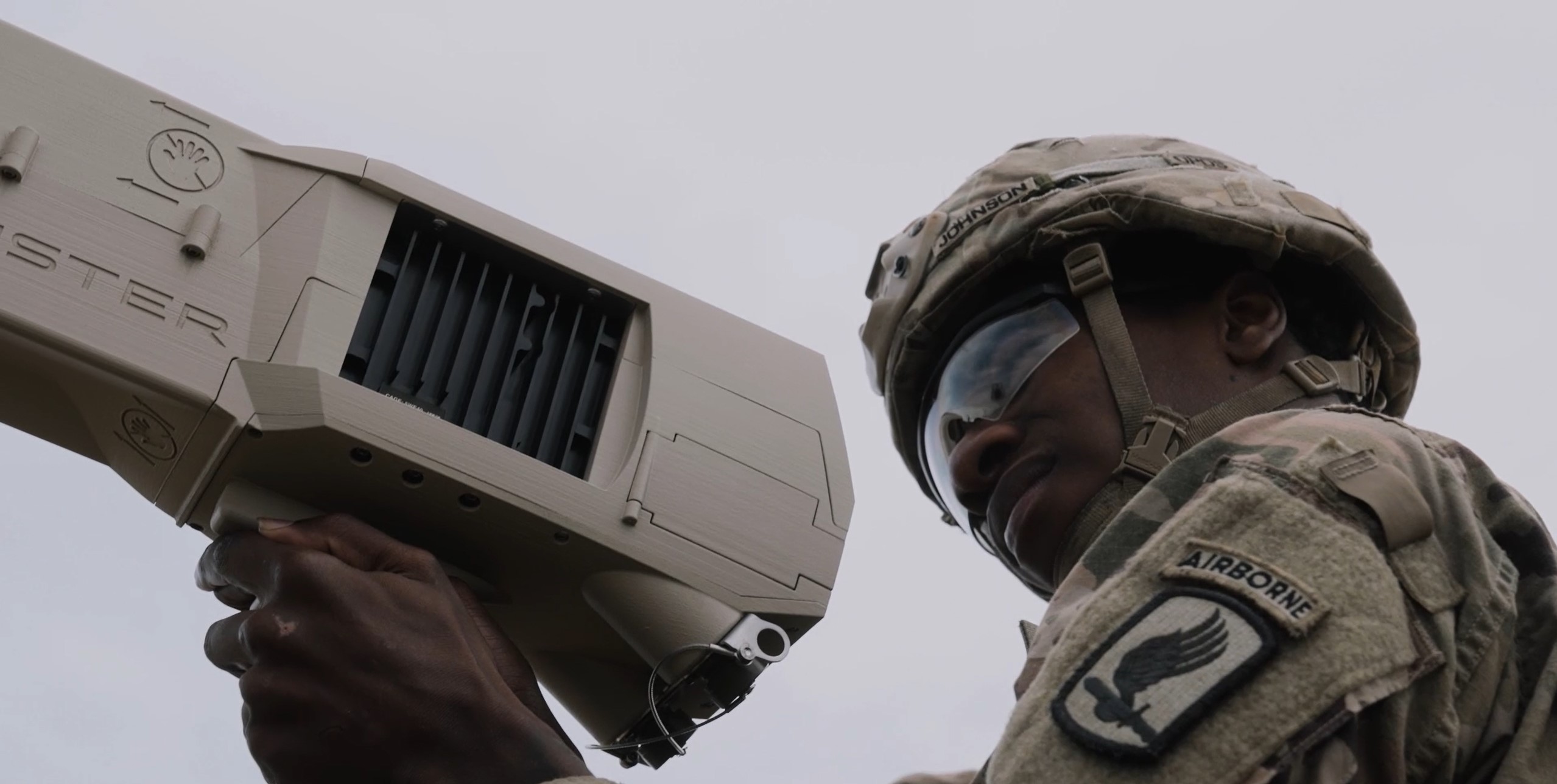Andrew Drwiega interviews Clay Wild, vice president, International Business Development at Flex Force.
“In terms of the war in Ukraine, I don’t think that anyone had anticipated that the standard recreational drone would be such a useful tool,” says Clay Wild, vice president, International Business Development at Flex Force. The answer, according to Wild, are handheld counter-unmanned aerial systems (UAS) such as his company’s Dronebuster, which can be used as a handheld-only device or in a handheld/mounted configuration.
Dronebuster is designed to stop commercial drones that are rapidly proliferating and being used by militaries around the world. There are made for mass use unlike the made-for-military higher flying, more substantial and technically superior UAS aircraft.
However, there are exceptions. Wild points out that “it has been observed in the Ukraine that some of the Russian and Iranian drones, such as the Shahed-136, are using commercial components which we do have effect against.” It has also been confirmed that many of the smaller drones being used by the Russian’s have been developed using a variety of western, non-encrypted components which means that the Dronebuster can detect and engage them.
Flex Force’s Dronebuster is already being used by the US Army and is also supplied to the US Army’s European command HQ based in Germany. It is the only handheld electronic attack system authorised by the US Department of Defense (DoD). The UK Ministry of Defence (MoD) is also still considering Dronebuster for its own C-UAS requirement after a number of trials, as well as other NATO nations.
Development Path
Flex Force now offers three versions of its Dronebuster: the basic Dronebuster 3; the advanced Block 4; and the Dronebuster SNA.
The Block 3 is the older basic model which was upgraded in 2022 to address new and emerging drone threats. In full production, it offers capability while being the most inexpensive option. “Many countries, including the USA, are still buying the Block 3 because it is easy to use, carry and train on,” explains Wild. “Block 3 is very capable and want to be discreet when they employ them,” he continues. Potential users here include protection details and police units, particularly those that have a ‘secret service’ type mission providing VVIP protection. These forces will typically have six to ten units.
“Many countries have transitioned into the Block 4 because it is newer and more versatile system – and we are currently sending them out to fulfill customer orders as fast as we can build them,” says Wild.
The Dronebuster SNA includes a satellite navigation attack (more commonly known as spoofing) feature. “Generally, the act of jamming doesn’t do anything to GPS controlled drones,” according to Wild. “Other vendors using GNSS spoofing operate from larger fixed site systems, while we are the only ones who have been able to pack the technology into a handheld. This has been made possible by adding into the Block 4 version a number of components including a digital magnetic compass and GPS receiver so that we can orientate the equipment in space. This now allows the Dronebuster SNA to engage GPS controlled drones that are following a pre-planned path rather than being operator controlled.”
The result is that the Dronebuster SNA takes control of the drone’s flight computer, interrupting its default position, navigation, and timing (PNT) and forcing it to fly away from the Dronebuster’s location. This can be achieved at distances between 2,600-3,200 feet (800-1,400 metres).

Designed for Users
“We have been developing Dronebuster over the past seven years, and we are now in our fifth generation Dronebuster,” explains Wild. “We have built-up a lot of experience of handheld systems and we have figured out what soldiers are willing to carry in terms of size and weight. You need to pack as much capability – battery life and performance – into the system. We have found that the optimum weight limit is around 5.5 pounds (2.5 kilograms), which is about what soldiers can tolerate while operating in the field.”
“We are still providing basic detection and broad spectrum jamming, we are up to the point now where we are including a GNSS ‘spoofing’ feature so that we can reliably attack those ‘dark’ drones using pre-programmed way points,” he confirms. “That is a lot of capability.”
In terms of the operator, Wild says that the Dronebuster is simple to understand and easy to operate. “A soldier can get the basics of how to use it with around five minutes of training. The US Army said that they wanted ‘a trigger and a couple of switches maximum’ – so we needed to keep it simple.”
“We always get asked about the range of the jammer,” says Wild. “But the range of jammer depends on drone type – so difficult to give precise details. Jamming is not a precise function for a variety of reasons, which makes it difficult to write precise requirements.”
As for maintenance, the Dronebuster system does not need regular maintenance. “We have taken the time to go through a third party testing regime. We have run a whole range of tests and IP ratings from temperature, water ingress, dropping and even safety such as radiation hazard testing. Larger systems put out a lot of wattage and can be harmful if not pointed at the drone or sky. Most end users are concerned about high powered directional jammers and where they are pointed. There is more radiated power in jamming systems particularly if they are vehicle systems or even shipboard systems.
But for handheld systems used by soldiers or police officers – the only instruction is that they should not be pointed at people. But this also comes through the correct training.” The only item that will need replacement in time is the lithium-ion battery.
As yet there has been no official testing against smaller loitering munitions, and the results of what has been done remain classified.
by Andrew Drwiega














